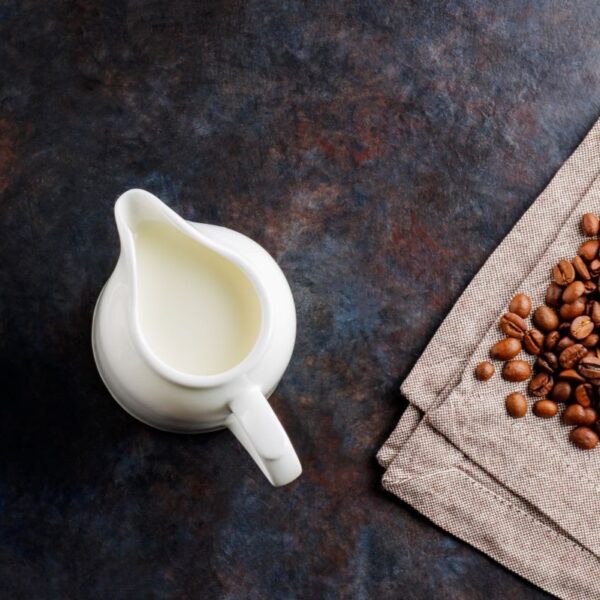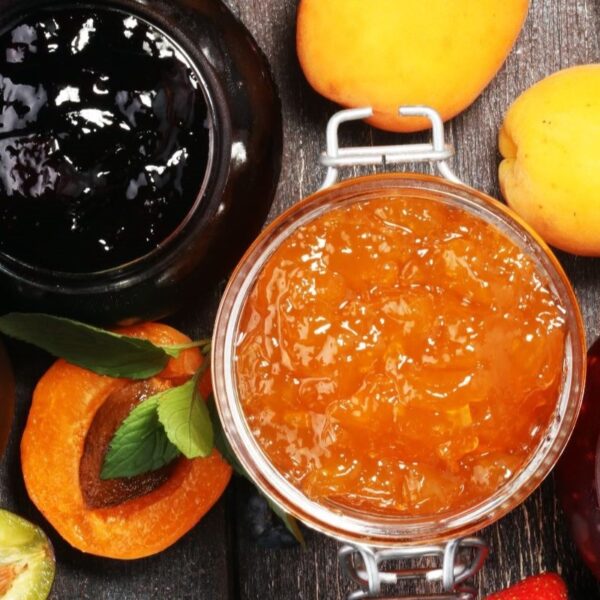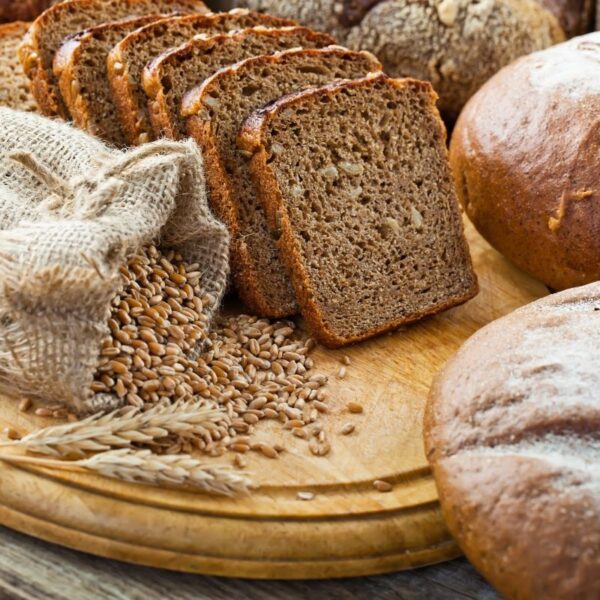Catechin is a type of flavonoid, a group of plant compounds known for their antioxidant properties. It occurs in various plants, particularly tea leaves, cocoa beans, and certain fruits. Catechins have been studied for their potential health benefits, which include reducing inflammation, improving heart health, and aiding in weight loss. They have a bitter taste and contribute to the astringency of certain foods and beverages.
What is Catechin?
The primary catechin molecule possesses two benzene rings and a dihydropyran heterocycle with a hydroxyl group on carbon 3. There are two chiral centers on the molecule on carbons 2 and 3. It has four stereoisomers — two of the isomers are in the trans configuration, called catechins, and the other two are in cis configuration, called epicatechins. The most common catechin isomer is (+)-catechin.
Catechin molecular structure. Source: PubChem
Catechins in Tea
The polyphenols in tea are composed of catechins (C) and their conjugated products — namely, epigallocatechin gallate (EGCG) 60.89%, epicatechin (EC), epicatechin gallate (ECG) 15.44%, and gallocatechin (GC) 13.08%. Some of these catechins, including EGCG, are found solely in tea. On average, catechins comprise around ~25% of green tea leaf composition and ~10% of black tea. The catechin content of any given type of tea depends largely on where and how the tea is produced.
Green and black tea are processed differently, and their catechin content is altered accordingly. Green tea is produced by drying and steaming fresh leaves, which inactivates the enzyme polyphenol oxidase, thereby protecting most of the catechins in the tea. In contrast, in the fermentation process of black tea, catechins are oxidized and condensed to produce theaflavins and thearubigins.
The chemical structures of tea catechins are given below:
| Epigallocatechin-3-gallate (EGCG) | |
| Epigallocatechin (EGC) | |
| Epicatechin-3-gallate (ECG) | |
| Epicatechin (EC) |
Source: PubChem
How is Catechin Produced?
There are a variety of natural sources of catechins. The availability of catechins in each of these sources varies, which is a significant reason for their nonuniform intake in nutrition. High catechin content is reported to be present in fresh tea leaves, apricots, broad beans, black grapes, strawberries, and wines, among other sources.
The most common sources of catechins and their respective concentrations are given in the table below.
| Source | Total Amount of Catechins (mg/100 g) | Abundant Type | |
|---|---|---|---|
| Fruits | Apple | 10–43 | Epigallocatechin Gallate |
| Apricot | 10–25 | Epicatechins | |
| Cherry | 5–22 | Epigallocatechin Gallate | |
| Strawberry | 2–50 | Catechin | |
| Vegetables | Beans | 35–55 | |
| Beverages | Black tea | 6–50 | Epigallocatechin Gallate |
| Green tea | 10–80 | Epigallocatechin Gallate | |
| Cider | 4 | Catechin | |
| Red wine | 8–30 | Catechin | |
| Algae | Green algae (Acetabularia ryukyuensis) | 33.3 | Catechin, Epicatechin |
| Eisenia bicyclis | 38.6 | Catechin Gallate, Epicatechin | |
| Red algae (Chondrococcus hornemannii) | 217 ± 95 | Catechin, Epigallocatechin | |
| Other | Chocolate | 46–61 |
Source: ScienceDirect
Applications in Food & Nutrition
Catechin is a flavonoid with several health benefits. It performs several functions in food, dietary supplements, and nutraceuticals, as described below:
| Function | Applications |
| Antioxidant | Antioxidant properties of catechins are primarily due to their redox properties, which let them act as reducing agents, hydrogen donors, and singlet oxygen quenchers. |
| Anti-Inflammatory | Catechins, particularly epigallocatechin gallate and epicatechin gallate, can inhibit the growth of a wide range of Gram-positive and Gram-negative bacterial species with moderate potency. They can suppress the expression of bacterial virulence factors and reverse the opportunistic pathogen’s resistance to antibiotics. |
| Antimicrobial Activity | Catechins, particularly epigallocatechin gallate and epicatechin gallate, can inhibit the growth of a wide range of Gram-positive and Gram-negative bacterial species with moderate potency.They can suppress the expression of bacterial virulence factors and reverse the opportunistic pathogen’s resistance to antibiotics. |
Properties of Catechin
| Physical Form | Solid, Powder |
| Color | Colorless |
| Storage Temperature & Conditions | 25 °C in dry & dark conditions. |
| Molecular Weight | 290.27 g/mol |
| Melting Point | 214 °C |
| Boiling Point | 630.38 °C |
| UV-vis (λmax) | 276 nm |
| Solubility (Water) | 0.45 mg mL−1 |
Catechin Formulation Considerations
| Physical Forms | Powder, Solid |
| Stability | pH: Found to be more stable at high concentrations, around pH 4 Light: Unstable under visible light illumination Heat: >98°C (Heating at 98°C for 15 min causes 10–15% loss of tea catechins) |
| Sensory Attributes | Taste: Strong bitter tasteColor: Colorless |
| Interaction with Other Components | The concurrent use of a drug and green tea can alter the concentration of the drug, as the catechins can potentially interact with drug-metabolizing enzymes or transporters. EGCG can interact with P glycoprotein and affect the absorption of other drugs. |
Absorption & Metabolism
Catechins exist in aglycone form. Their absorption is not influenced by glucosidase digestion in the small intestine. They can be absorbed directly across the intestinal surface.
Catechins are mainly metabolized by phase 2 conjugation processes through methylation, sulfation, and glucuronidation in the intestine and liver after oral administration. Glucuronidation and sulfation can increase the polarity of catechins to enhance solubility and facilitate their elimination through urine. In a study, many catechins were found to be further catabolized by microflora in the colon, reabsorbed into plasma, and eliminated through urine.
Bioavailability
In a study, the oral bioavailability of tea catechins in human plasma was 5 to 50 times lower than the level needed to exert biological activities in vitro systems. However, dosing conditions could significantly impact the systemic availability of green tea catechins. Another study showed that the oral bioavailability of green tea catechins can be enhanced when consumed without food. Similarly, a separate study revealed that epigallocatechin gallate supplement is incorporated into human plasma at a maximum concentration of 4400 pmol/mL. Such concentrations would be enough to exert antioxidative activity in the bloodstream.
Safety & Regulatory Considerations
The FDA lists oil-soluble green tea extract (Green Tea Catechin Palmitate) as an antioxidant in various food products as Generally Recognized as Safe (GRAS), based on scientific procedures.
Health Effects of Catechin
Catechins may help reduce the risk of various health and mental health conditions and prevent oxidative stress.
Weight Loss
Catechins reduce lipid production and promote lipolysis and lipid metabolism. They help to speed up metabolism, increase fatty acid oxidation and thermogenesis.
- Catechins have an impact on neuroendocrine metabolic regulators of appetite and thereby decrease food intake.
- Catechins are associated with reducing the emulsion and absorption of lipids and protein in the gastric tract and therefore diminish calorie consumption.
- Catechins impact the gut microbiota, increasing short-chain fatty acids’ production, which helps regulate lipid metabolism.
- Catechins transform white adipose tissue to brown, escalate oxidation, and expend energy through heat generation, promoting fecal lipid excretion.
- Obesity and oxidative stress are deeply intertwined. Irregularly producing reactive oxygen species and oxidative stress in adipose tissue can result in various pathophysiological situations. Catechins, along with other antioxidants, can help alleviate chronic obesity.
Cancer Prevention
The antioxidant activity of catechins is most commonly acknowledged for its role in cancer prevention. The anticarcinogenic effects of catechins include inhibiting the growth of cancer cells, scavenging free radicals, suppressing metastasis, improving immunity, the apoptosis of cancerous cells, and regulating signaling pathways.
- Catechins partially protect DNA from radical-induced strand breaks and base damage through fast chemical repair of DNA radicals.
- Epigallocatechin-3-gallate induced apoptosis in human malignant B cells via modification of the redox system.
- Catechins have been shown to have a potential role in suppressing breast cancer and preventing its recurrence.
- In a study, catechins showed antagonistic effects on many cancers, including gynecological, digestive tract, incident glioma, liver and gallbladder, and lung cancers.
Neuroprotection
Catechins can help in the prevention of neurological disorders that are caused by oxidative damage. They act as neuroprotective agents.
- Epigallocatechin gallate has pleiotropic neuroprotective effects and is effective in experimental models of Parkinson’s disease.
- Catechins prevent the abnormal accumulation of fibrous proteins, such as Aβ and α-synuclein, inflammation, elevated expression of pro-apoptotic proteins, and oxidative stress, which are associated with neuronal cell dysfunction.
- Tea catechins can reduce oxidative stress in peripheral and brain tissue and may suppress behavioral changes related to cognitive deficits, as observed in Alzheimer’s disease.
- Daily intake of catechins can have beneficial effects on working memory.
Heart Health
The cardioprotective effects of catechins are manifold and include reductions in systemic blood pressure, atherosclerosis, platelet activation, and thrombus formation.
- Catechins modify lipid biosynthesis and reduce intestinal lipid absorption, improving blood lipid profile.
- Catechins have been shown to alleviate atherosclerosis in mice by altering endothelial function, plaque size, and lipid metabolism.
- Epicatechin-3-gallate could suppress the gene expression of a scavenger receptor CD36, a key molecule for foam cell formation, in macrophage cells.
Diabetes Management
The antioxidant properties of catechins help prevent the irregular production of reactive oxygen species responsible for various pathophysiological conditions, including diabetes.
- Catechins protect erythrocytes from t-BHP-induced oxidative stress. The effect is more pronounced in diabetic erythrocytes.
- Catechins activate APMK and PI3K, enhancing insulin sensitivity and ultimately promoting cellular glucose uptake.
- Catechins promote glucose-stimulated insulin secretion by increasing mitochondrial oxidative phosphorylation and ATP production.
Endurance & Improved Energy Expenditure
Catechins may help to increase performance during endurance activities.
- In a study, catechins increased daily energy expenditure due to a cumulative increase in postprandial thermogenesis in the diurnal period.
- Epigallocatechin-3-gallate can be used to design nutraceutical supplements to facilitate fatigue recovery and attenuate exhaustive exercise-induced oxidative damage.
Oral Health
Catechin has selective antimicrobial activity helping in oral health. In a study, catechin gel inhibited the growth of the Actinomyces, periodontopathic bacteria, and Candida strains tested. Still, it did not inhibit that of the oral streptococci that are important in normal oral flora.
Safety & Toxicity of Catechin
Green tea infusions prepared traditionally and reconstituted drinks with an equivalent composition to traditional green tea infusions are generally considered safe. However, concerns have been raised about possible harmful effects associated with using green tea extracts and infusions, including reported cases of liver toxicity possibly related to the intake of green tea catechins.
Identification Numbers
| IUPAC Name | (2R,3S)-2-(3,4-dihydroxyphenyl)-3,4-dihydro-2H-chromene-3,5,7-triol |
| CAS Number | 7295-85-4 |
| EC Number | 205-825-1 |
| FEMA Number | 4812 |
Acceptable Limits or Maximum Usage
The mean daily intake of EGCG from green tea infusions ranges from 90 to 300 mg/day. Food supplements for the adult population containing green tea catechins typically provide a daily dose of EGCG of 5-1,000 mg/day.
A study has proposed a tolerable upper intake level of 300 mg/day of EGCG, based on human data in healthy adults in a fed state, and an acceptable daily daily daily intake (ADI) of 4.6 mg/kg derived from animal toxicity data.
Fun Facts About Catechin
- Catechin is a type of natural phenol and antioxidant. It’s found in abundance in a variety of plants, with some of the most significant sources being green tea, black tea, and red wine.
- The name of the catechin chemical family is derived from catechu, which is the tannic juice or boiled extract of Mimosa catechu.
- Catechins have been researched extensively for their potential health benefits. They have been found to exhibit anti-inflammatory, antioxidant, and anticancer properties. Moreover, studies suggest they may help reduce the risk of heart disease and assist with weight management.
- The amount of catechins in tea leaves can vary depending on how the leaves are processed. Green tea, which undergoes minimal processing, retains the most catechins. On the other hand, the fermentation process that black tea undergoes reduces its catechin content but increases other types of antioxidants.
- Catechins have demonstrated a broad spectrum of antibacterial activity against various pathogenic bacteria, which could affect their use in maintaining gut health.
Additional Resources
- NCBI – Biocatalytic Synthesis of Flavors and Fragrances
- ScienceDirect – Microbial Production of Flavor and Fragrance Ingredients
- NCBI – Metabolic Engineering for the Production of Flavors and Fragrances
- NCBI – Advances in Biotechnology for the Synthesis of Flavors and Fragrances
- NCBI – Production of Flavors and Fragrances by Plant Cell Cultures
- NCBI – Advances in Microbial Production of Flavors and Fragrances
- NCBI – Metabolic Engineering Approaches for Flavor and Fragrance Production
- IngentaConnect – Microbial Production of Flavors and Fragrances: Current Status and Future Prospects
- SpringerLink – Advances in Biotechnology for Flavors and Fragrances
- ScienceDirect – Biotechnology of Flavors and Fragrances
- MDPI – Advances in Flavor and Fragrance Biotechnology
- IntechOpen – Biotechnology of Flavors and Fragrances
- IntechOpen – Advances in Flavor and Fragrance Biotechnology








